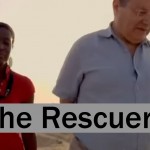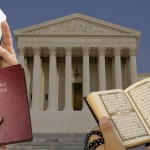“RuPaul’s Drag Race” is one of the most important shows on television, bar none. It has created a March Madness-level frenzy for the gay community. Where were Bianca del Rio, Courtney Act and Adore Delano on your bracket? Aside from being able to talk to almost any gay man, at length, about the show, it has bridged the gap with the straight community. The show has grown a fan base of allies while also affirming the cultural contribution of drag and by extension, the gay community. It’s a perfect amalgam of the most delicious parts of reality television. It’s also an honest portrayal of a cross-section of the LGBTQ community.
RuPaul and his friends at the production company World of Wonder have worked together for years. But with “Drag Race” they’ve found the convergence of all the things that make addictive reality television. It’s a skill-based show like “Project Runway” and “Top Chef.” It includes the ratchet drama and sassy interviews of shows like “The Real Housewives.” There’s fashion-based challenges and behind-the-catwalk drama like “America’s Next Top Model.” Plus, there’s snarky commentary by gay men with an entire lexicon of new slang like shade, reading and death-drops. What else could you want?
The show is not just a reality guilty pleasure. It presents a balanced view of the gay community. It shows the good, the bad and the plain sloppy. The show doesn’t just focus on the men in drag: It also shows them without makeup and censors. These men expose their issues with coming out, romantic relationships and even struggles with HIV. Ongina and Trinity K. Bonet have both come out as HIV positive on the show. That’s important because not only does it give a face to the disease, it shows how young people are affected. Sharing alienation, abuse and struggles are not just the hallmark of entertaining television, (right Oprah?). It’s also important to broach these topics on a national scale. Other contestants have come out as transgendered and discussed their trans identity vs. drag. The show has also regularly featured Chaz Bono as a guest judge. It also explores other aspects of the LGBTQ umbrella with queer cast members, drag queens with biological children and in its now-defunct spin-off, “RuPaul’s Drag U,” lesbians.
There has been some controversy, as well. The show’s tackling of trans-issues has been unbalanced. The show has used transphobic words like tranny and she-male, which are not appropriate even in jest. However, it has provided a dialogue about transphobia on a national scale. It has also opened people’s mind to the fact that drag queens and transgendered women are vastly different and not comparable. It has also helped create trans-celebrities like Carmen Carrera and Monica Beverly Hillz. The show may not have been perfect in tackling the trans-community, but at least it has tried and provided a platform with appearances by Bono and actress Candis Cayne.
“RuPaul’s Drag Race” is not just a gay show on a gay network. It’s found popularity in the straight community. Not only has it helped strengthen the gap between tenuous political allies gay men and straight women, it’s even found a straight-male fan contingency. It has helped unite the vast races of the LGBTQ community with a cast of various races every season. It has heralded the contributions of African American and Latino men to the gay community with regular references to the cult documentary “Paris is Burning.” It also offers an alternative take on the “masculine”-obsessed gay culture, by showing how manly these men can be in and outside of drag.
The show has turned RuPaul from America’s premiere drag queen into a media mogul. Not only does it provide him with a platform to build his brand, it’s also created a whole host of new gay celebrities. It proves the buying power of the gay community is still strong with its ratings success and overwhelming social media presence. And despite the occasional shameless self-promotion, RuPaul’s brand is built on positivity and encouragement. “Everybody say love” is more than just a tagline. The show may celebrate queens making witty barbs at each other, but underneath it is a message of fraternity, sorority and self love.
Part gay World Series, part reality behemoth and part self-love bonanza, “RuPaul’s Drag Race” brings together people of different races, ages, political views and sexual identities under a show that is insanely addictive. Rather than highlighting the “otherness” of the gay community, it celebrates all the things we have in common. After all, it’s like RuPaul says, “We’re born naked, the rest is drag.”
“RuPaul’s Drag Race” airs Mondays at 9 p.m. on Logo TV. The season finale will air May 19.
Christian Cintron is a contributing journalist for TheBlot Magazine.





